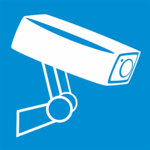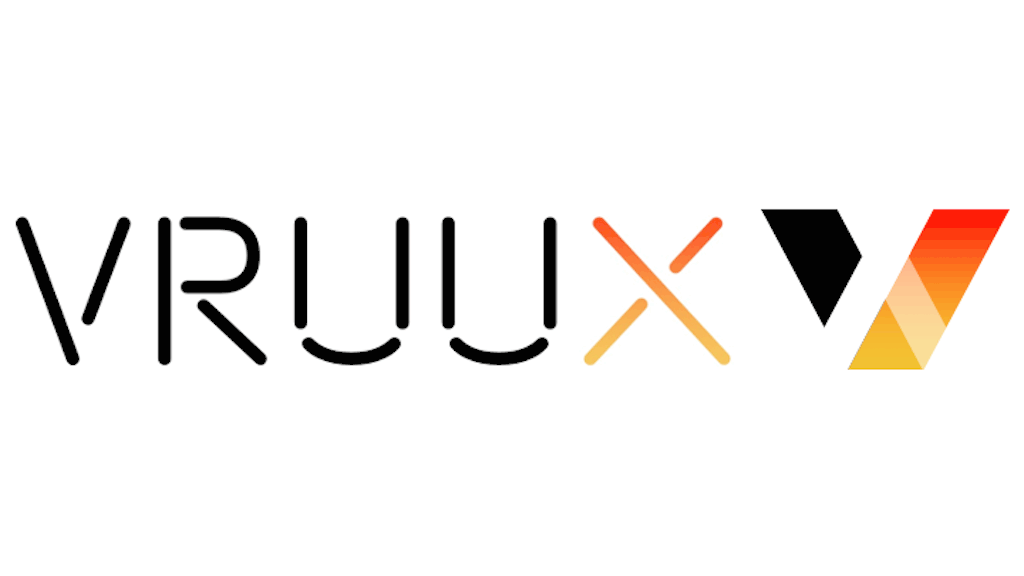Yes, most physical security software is compatible with different devices and platforms. This provides for seamless use and management of the program independent of the device utilized. However, you should check with the program provider to confirm compatibility with your preferred systems. With the increased use of mobile devices, many physical security software now includes mobile applications for easy access on the road.
List of 20 Best Physical Security Software
Resolvers Incident Management Software, your ultimate tool to turn incident data into valuable insights. Powered by cutting-edge technology and robust security management tools with the added element of artificial intelligence, our solution offers so...Read More Resolver Incident Management
ActivitySuite is your all-in-one solution for Private Patrol Operators, equipped with all the necessary features to streamline and manage your field activities. Our web-based tool offers detailed reporting, effortless tracking of maintenance tasks, a...Read More ActivitySuite
ProxiGuard Patrol Management – solution for streamlined patrol management. This robust system offers real-time monitoring, impact detection, and advanced reporting features, ensuring prompt and accurate completion of patrols by security person...Read More ProxiGuard Patrol Management
Camlytics is a physical security solution designed for startups, organizations, and enterprises. Through both web and desktop applications, it offers features such as data collection, event management, and incident reporting. With its detailed analyt...Read More Camlytics
Xeoma is a video surveillance software that is designed for seamless and hassle-free usage. Its user-friendly interface and extensive camera compatibility make it ideal for both personal and business monitoring needs. It ensures smooth and effective...Read More Xeoma
OfficerReports.com is is the solution tailor-made for security guard companies. Our software simplifies reporting, tour tracking, and time and attendance management, all from one central hub. Its intuitive interface ensures easy setup and deployment,...Read More OfficerReports.com
BeeOn Security Software is a protection for your valuable assets. With powerful technology and user-friendly features, it offers comprehensive security and seamless integration to cater to your organizations unique needs. With BeeOn Security Software...Read More BeeOn Security Software
Incy.io is a field reporting platform that enhances employee productivity by simplifying the process of issue reporting, inspection, and resolution. It seamlessly integrates with various applications, streamlining workflows and promoting a safe and h...Read More incy.io
Luchismart, the premier cloud-based platform for managing access control, time and attendance, and workforce efficiency. Our cutting-edge technology enhances security, productivity, and overall operations for enterprises. With an intuitive interface...Read More Luchismart
VIGILIA is a WORKPLACE SAFETY SOLUTION fueled by cutting-edge ARTIFICIAL INTELLIGENCE technology. This state-of-the-art software identifies and reports safety breaches in both enclosed spaces like factories, labs, and kitchens, as well as in open are...Read More VIGILIA
Bold Gemini, alarm monitoring software that seamlessly integrates multiple security systems for enhanced protection. Ideal for a range of environments, it offers advanced technology and user-friendly features to ensure maximum safety and smooth opera...Read More Bold Gemini
eFACiLiTY® Visitor Management solution for modern security needs within large organizations and infrastructure. This comprehensive system effortlessly registers and monitors visitors, with the added functionality of seamless integration with acces...Read More eFACiLiTY® Visitor Management
SiteOwl solution for businesses seeking to streamline their electronic security infrastructure management. From project design to installation and team coordination, our state-of-the-art software empowers organizations to efficiently handle all aspec...Read More SiteOwl
TourWatch XT - a software solution that revolutionizes operations by automating processes and providing data-driven insights. Experience enhanced productivity and seamless management of departments, allowing businesses to prioritize strategic goals...Read More TourWatch XT
eFACiLiTY® Patrol Management - a solution for optimizing security patrol processes. Our intuitive software enables guards to conduct patrols and report incidents in real-time using their smartphones. With advanced tracking and mana...Read More eFACiLiTY� Patrol Management
Millennium Ultra is a cloud-based privileged access management solution recognized for its robust security features and extensive monitoring capabilities. Ideal for single entryways or large-scale facilities, this software effectively manages multipl...Read More Millennium Ultra
CredoID is access control software that combines a user-friendly interface with efficient system management capabilities. Designed to be intuitive and adaptable, it caters to users of varying skill levels, enabling them to easily manage their access...Read More CredoID
Patrol Points, a security guard tour system that utilizes NFC technology on smartphones to revolutionize patrol operations. Our software offers an array of features that streamline patrol completion, enhance security management, and provide real-time...Read More Patrol Points
Lighthouse.io is mobile workforce management platform designed for the cleaning and security industries. With its real-time tracking and monitoring features, Lighthouse.io allows businesses to improve efficiency, compliance, and communication in faci...Read More Lighthouse.io
Silvertrac Software is a leading security, incident reporting, and parking management platform that is renowned in the industry. Our cutting-edge features, including real-time GPS tracking and reporting, guarantee quick notifications for critical eve...Read More Silvertrac Software
Learn More About Physical Security Software
- What Is Physical Security Software?
- What Are The Recent Trends In Physical Security Software?
- Benefits Of Using Physical Security Software
- Important Factors To Consider While Purchasing Physical Security Software?
- What Are The Key Features To Look For In Physical Security Software?
- Why Do Businesses Need Physical Security Software?
- How Much Time Is Required To Implement Physical Security Software?
- What Is The Level Of Customization Available In Physical Security Software?
- Which Industries Can Benefit The Most From Physical Security Software?
- Conclusion
What Is Physical Security Software?
Physical security software is a form of technology that helps to improve and manage the overall security of physical sites including buildings, facilities, and offices. It provides a comprehensive approach to physical security by combining hardware and software components. This type of software is critical for enterprises, organizations, and institutions of all sizes and industries because it prevents illegal access, monitors activity, and responds to possible threats in real time.
Physical security software works by integrating numerous security systems, such as video surveillance cameras, access control systems, alarm systems, and others, into a single platform. This provides a comprehensive picture of the premises, allowing security personnel to effectively monitor and respond to any suspicious incidents.
Furthermore, physical security software frequently includes capabilities like as incident reporting, emergency communication, and access management, making it a versatile and comprehensive solution for overall security management. One of the primary advantages of physical security software is its ability to provide real-time warnings and notifications. With powerful analytics and artificial intelligence capabilities, the software can discover trends and abnormalities that may suggest a threat.
This allows security staff to respond quickly and efficiently, lowering the danger of theft, vandalism, and other criminal activity. Physical security software uses technology to greatly improve the effectiveness of traditional security measures, resulting in a more secure and safe environment for people and assets. Another benefit of physical security software is its scalability.
It can be customized and designed to fulfill the unique requirements of various industries and places. For example, a school may demand access control and guest management tools, whereas a hospital may prioritize video surveillance and incident reporting. Physical security software can be customized to meet these specific needs, making it an adaptable option for a variety of applications.
What Are The Recent Trends In Physical Security Software?
Physical security software is a crucial tool for firms that want to properly secure their buildings and assets. This type of software is constantly evolving to stay up with the shifting threat landscape and technological breakthroughs. To make an informed purchasing decision, a buyer must stay up to date on the newest trends in physical security software.
Here are some recent industry developments that you should be aware of:
1. AI and Machine Learning (ML) Integration: Physical security software is progressively incorporating AI and ML to make it more intelligent and efficient. These technologies can detect anomalies and unlawful actions, notify security staff in real time, and even automate some security operations.
2. Cloud-Based Solutions: Cloud-based physical security software has many advantages, including scalability, adaptability, and remote access. With the development of remote work and the demand for a secure remote monitoring system, more firms are turning to cloud-based solutions.
3. Internet Of Things (IoT) Integration: IoT devices, such as surveillance cameras and sensors, are now widely used in physical security systems. These devices can communicate with the software, delivering real-time data and improving overall security and monitoring capabilities.
4. Mobile Applications: Mobile applications have become a crucial component of physical security software, allowing security professionals to monitor and operate their systems via cellphones. These apps also offer push notifications and remote access, making security operations more efficient.
5. Video Analytics: Artificial intelligence and machine learning can analyze surveillance footage in real time and identify potential security issues. This technology has the potential to automate surveillance duties, reduce the danger of human mistake, and provide useful insights for improving security.
6. Physical-Digital Convergence: As Internet-connected products and smart buildings gain popularity, the distinction between physical and digital security has become less clear. Physical security software is currently being developed to interface with these digital technologies, resulting in a more comprehensive security solution.
Benefits Of Using Physical Security Software
Physical security is an essential component of every business or organization. It protects physical assets, employees, and sensitive information against potential threats. Many firms are turning to physical security software to better manage and improve their physical security procedures. So, what exactly constitutes physical security software? It is a complete system that uses a variety of techniques and technologies to monitor, track, and protect physical assets. With the rise of digitization and cybersecurity risks, physical security software has become a critical investment for any company.
Here are some of the main advantages of adopting physical security software for your organization:
1. Real-Time Monitoring And Surveillance: Physical security software offers real-time monitoring and surveillance of your facilities, allowing you to stay up to current on all actions. The program collects and records all activity using IP cameras, access control systems, and intrusion detection sensors, allowing you to have complete control and visibility over your physical environment.
2. Streamlined Operations: Physical security software centralizes all security controls, making them more manageable and operational. It eliminates the need for manual security inspections and enables you to monitor many sites using a single platform. This streamlines your security procedures, lowers human error, and boosts efficiency.
3. Risk Management: The software conducts a thorough analysis of potential hazards and vulnerabilities, allowing you to take appropriate precautions to mitigate them. It allows you to establish security policies, execute emergency response plans, and conduct frequent risk assessments. This proactive approach to risk management can help avert possible risks and mitigate their consequences.
4. Access Control: Physical security software includes extensive access control features that allow you to regulate who enters your facilities and at what times. You can prevent unwanted access to sensitive locations by enabling user-specific access rights. It also makes it easy to track and manage visitors, employees, and contractors while maintaining optimum security.
5. Integration With Other Systems: One of the primary benefits of physical security software is its ability to integrate with other systems. It can work with your building management systems, fire alarms, and other security systems to provide a complete security solution. This integration improves emergency communication, coordination, and response.
6. Cost-Effective: Physical security software is an affordable long-term option. It reduces the need for costly physical security measures, such as paying security guards or installing manual alarm systems. The program offers 24/7 surveillance at a fraction of the expense, making it an affordable option for organizations of all sizes.
Important Factors To Consider While Purchasing Physical Security Software?
Investing in physical security software is essential for protecting your physical assets as well as the safety of your employees and customers. However, with so many options on the market, it might be difficult to select the best one for your organization.
To assist you in making an informed decision, below are the key elements to consider when selecting physical security software:
1. Security Features: Because the major goal of physical security software is to improve the security of your facility, it is critical to compare the security features provided by various products. Look for software-integrable features like access control, surveillance cameras, alarm systems, and motion detectors. Choose software that provides a comprehensive and configurable security solution to meet your individual requirements.
2. Ease Of Use: You don't want to invest in software that is difficult to use and requires lengthy training. Look for software with an intuitive interface that your employees can quickly navigate. This not only saves time and costs, but also ensures a prompt and efficient reaction to any security concerns.
3. Integration Compatibility: To guarantee that your physical security software is as effective as possible, it must be compatible with your existing security systems. Choose software that integrates smoothly with your existing alarm, CCTV, and access control systems. This not only saves you money, but also ensures that all of your security systems run smoothly.
4. Cost: The price of physical security software varies substantially based on its features and capabilities. It is critical to examine your budget and select software that provides the required capabilities at a fair cost. However, keep in mind that investing in quality security software is a long-term investment that should not be sacrificed for a lower-cost alternative.
5. Customer Support: Physical security software, like all other software, may experience technical faults or require updates. It is critical to select a vendor who provides trustworthy and timely customer support. Look for companies who provide 24-hour assistance and a specialized team to handle any technological concerns that may emerge.
6. Scalability: As your organization grows, your security requirements may shift. It is critical to select software that is flexible and adaptable to your company's changing security requirements. This will save you from having to invest in new software each time your organization expands.
Keeping these aspects in mind when purchasing physical security software will assist you in selecting the appropriate software that matches your company's objectives while also providing a secure environment for your staff and consumers. Invest wisely and protect your business assets with the appropriate physical security software.
What Are The Key Features To Look For In Physical Security Software?
Physical security software is a crucial tool for businesses and organizations that want to protect their facilities, assets, and employees. However, with so many alternatives on the market, it can be difficult to identify which features are essential and which are just bells and whistles. As a buyer, you need to understand the fundamental aspects that make physical security software successful and efficient.
Here are the key features to look for in physical security software:
1. Access Control And Authorization Management: Access control is a key element of physical security software, allowing you to limit access to certain regions based on user responsibilities and permissions. Look for software that provides strong permission management, such as the ability to create different levels of access, track user activities, and revoke access immediately if necessary.
2. Surveillance And onitoring: Effective physical security software should include integrated surveillance and monitoring features. This includes video recording and storage, live camera monitoring, and advanced features such as facial recognition and motion detection. The software should also handle a variety of camera types, including standard CCTV, IP, and wireless cameras.
3. Alarm And Alert Management: In the event of a security breach or emergency, the software should be able to sound alarms and send alerts to the appropriate persons. This can include SMS and email alerts, as well as auditory alarms and software user interface notifications. Furthermore, the platform should include powerful incident management tools for documenting and tracking security issues.
4. Visitor Management: For firms that receive a large number of visitors, physical security software with visitor management features can be extremely useful. This tool enables you to pre-register visitors, issue visitor badges, and track their activities on the premises. It also allows you to establish alerts for high-risk visitors and prevent access to illegal individuals.
5. Integration With Other Security Systems: To truly improve your physical security, you must have software that can work with other security systems including access control panels, fire and life safety systems, and intrusion detection systems. This allows all security systems to integrate easily and give a more complete security approach.
6. Analytics And Reporting: Choose physical security software that includes extensive analytics and reporting capabilities. This enables you to collect and analyze data from a variety of security devices, find patterns and trends, and create reports. This information can help you make more educated decisions and improve your entire security approach.
7. User-Friendly Interface: The program should have an intuitive interface that is simple to navigate and utilize. This is especially significant for firms that have different users with varying levels of technical proficiency. Software that is intuitive and user-friendly can save time and shorten the learning curve for new users.When considering physical security software, remember to take into account your individual security requirements and budget. Prioritizing the qualities listed above can help you choose software that matches your needs while also providing strong protection for your premises, assets, and personnel.
Why Do Businesses Need Physical Security Software?
Businesses today confront a wide range of security challenges, including physical break-ins and cyberattacks. These hazards represent major risks to a company's financial assets, as well as its reputation and general success. Here's where physical security software comes in. Physical security software provides a comprehensive solution for protecting a company's physical facilities and assets.
It usually incorporates features like access control, video surveillance, intrusion detection, and alarm systems. These technologies work together to provide a secure environment and prevent illegal access. One of the primary reasons firms want physical security software is for risk management. Businesses that invest in this type of software can proactively reduce the danger of theft, vandalism, and other physical hazards.
This is especially crucial for businesses that manage sensitive data or valuable assets. Furthermore, physical security software enables organizations to monitor their sites in real time, even from remote places. Business owners and security personnel may monitor their properties 24 hours a day, seven days a week by combining video surveillance and access control systems.
This is particularly useful for businesses with many sites or vast facilities. Another significant advantage of physical security software is the capacity to generate data and analytics. Businesses can spot patterns or suspicious activities by analyzing data from access control systems and video surveillance, allowing them to take required preventative measures.
Furthermore, having physical security software in place can help firms meet regulatory requirements. Physical security measures are critical for industries that handle sensitive data or must adhere to strict security regulations. Furthermore, it can assist firms avoid potential legal penalties in the event of a security breach.
How Much Time Is Required To Implement Physical Security Software?
The time required to develop physical security software varies depending on several factors. These can include your organization's size and complexity, the exact features and integrations required, and the level of customization necessary. In general, the implementation period can range from a few weeks to several months. The first step in installing physical security software is a thorough assessment of your security requirements and goals.
This may include performing a security audit, detecting any vulnerabilities, and selecting which features and integrations will best meet your needs. Once your requirements have been defined, the following step is to compare various software solutions and choose the one that best meets your demands. This process may take several weeks or more, as it is critical to carefully study each option and make an informed conclusion.
After picking the program, the implementation procedure can begin. This normally includes installing the software and any required hardware, configuring the system to fit your specific requirements, and teaching your team on how to use the product. Depending on the complexity of your company and the extent of customization required, this could take a few weeks to several months.
It is crucial to note that implementation is not a one-time event; it frequently requires ongoing maintenance and updates to guarantee that the software continues to fulfill your changing security requirements. As a result, while selecting a physical security software solution, keep the long-term commitment in mind.
What Is The Level Of Customization Available In Physical Security Software?
When selecting the proper physical security software for your company, one crucial factor to consider is the level of customisation offered. Physical security software has numerous levels of customization, allowing firms to adjust it to their own demands and security requirements. At its heart, physical security software is intended to monitor and control access to a physical place or facility.
However, the level of customization provided varies widely depending on the software. Some software provides simple customization choices, but others offer comprehensive features for enterprises with specialized security requirements. One of the first things to examine when evaluating the level of customization available in physical security software is the sort of access control it provides.
Most software supports many access levels and permissions, allowing businesses to select who has access to specific regions or resources. However, some software provides more detailed management, allowing firms to set different access levels for particular individuals or groups. Another important component of customisation in physical security software is the ability to interact with other security systems and devices.
CCTV cameras, alarm systems, and biometric scanners are all possible examples. The more advanced the program, the more customizable these integrations will be. For example, some software may support custom rules and alerts depending on specific events acquired by CCTV cameras. Furthermore, the user interface of the software might influence its level of customisation.
Some software allows for extensive customisation in terms of layout, color schemes, and branding, resulting in a more personalized experience for businesses. This is especially important for large enterprises with various sites or facilities who wish to retain consistent branding and user experience.
It is also important to investigate whether the physical security software has customisable reporting options. This is important for firms who need to create particular reports for regulatory compliance or internal monitoring. Some software may also allow users to develop bespoke dashboards for real-time tracking and monitoring of security actions.
Which Industries Can Benefit The Most From Physical Security Software?
Physical security software is a critical tool for enterprises in a variety of industries because it provides full protection against potential threats and risks to physical assets. In today's environment, when security breaches and thefts remain a major concern, investing in the correct physical security software is critical for maintaining the safety and security of a company's vital resources.
The following industries can benefit the most from deploying physical security software:
1. Retail: Retail establishments, such as shopping malls, grocery stores, and luxury boutiques, are extremely prone to theft and damage. Physical security software enables such businesses to detect suspicious activity, monitor inventory levels, and apply access control procedures to prevent unlawful entry into restricted areas. The software can also be integrated with other security systems, like as CCTV cameras and alarms, to create a full security solution for retail establishments.
2. Healthcare: Hospitals, clinics, and medical facilities handle sensitive and secret data, making them great targets for security breaches. Physical security software can protect these facilities by limiting access to restricted areas, recording personnel and equipment movements, and alerting authorities in the event of security breaches. It can also create thorough reports on security incidents, allowing healthcare institutions to take proactive steps to avoid future risks.
3. Financial Organizations: Banks, credit unions, and other financial organizations manage enormous sums of money, making them prime targets for theft and fraudulent activity. Physical security software can assist these institutions in monitoring and managing access to their facilities, securing currency storage and transportation, and detecting any suspicious activity via alarm notifications and real-time event tracking. This program also includes robust encryption and data protection features to ensure the security and confidentiality of sensitive financial information.
4. Government: Government facilities and agencies frequently keep confidential data and sensitive documents that must be strictly protected. Physical security software can assist these firms in controlling access to their facilities, tracking visitors, and monitoring personnel activity. It can also work with other security systems, such as biometric scanners and ID readers, to ensure that only authorized people can access restricted areas. Furthermore, the program may provide audits and reports to ensure compliance with government requirements while also providing actionable insights for risk assessments.
5. Transportation: Airports, seaports, and railway terminals are all exposed to security concerns like theft, terrorism, and vandalism. Physical security software can help secure these facilities by monitoring the movement of people and vehicles, detecting illicit entrance, and managing crowd control during peak times. It can also send real-time alerts to authorities in the event of any suspicious activity, so reducing possible hazards and ensuring the safety of passengers and employees.
Conclusion
Finally, investing in the correct physical security software is critical for any firm seeking to protect its assets, personnel, and sensitive data. With continually changing threats and security concerns, it is critical to have comprehensive and dependable security software in place. Throughout this buyer's guide, we've covered the key features and variables to consider when selecting physical security software.
We've also compiled a list of the market's leading vendors, along with their unique offerings and pricing models. When comparing software options, prioritize your individual security demands and budget. Remember to do extensive research and request demos or trial periods before making a final decision. By selecting the appropriate physical security software, you may not only improve your organization's security but also save time and resources in the long term. We hope this advice has helped you discover the best software solution for your organization.
Physical Security Software FAQ's
Can Physical Security Software Be Accessed Across Multiple Devices And Platforms?
Is Physical Security Software Future-Proof And Adaptable To Emerging Technologies Like AI, Blockchain Or IoT?
Physical security software is continually improving to keep up with emerging technologies like artificial intelligence, blockchain, and the Internet of Things. Physical security software is becoming more powerful and adaptive as smart gadgets and automated systems are used more frequently. Solutions that include these technologies are future-proof, offering consumers intelligent and efficient security measures. As technology advances, physical security software will adapt to ensure the safety and protection of people and things.
Is There A Free Trial Offered To Assess Physical Security Software Before Committing?
Yes, many physical security software companies provide a free trial period so that potential clients can evaluate the product before making a purchase. This allows customers to evaluate the software's features and operation and assess whether it fits their security requirements. It is recommended that you use free trials to make an informed decision and check that the software is a good fit for your organization before making a commitment.
Does Physical Security Software Offer Data Security Features And Meet Regulatory Compliance Standards?
Yes, physical security software enhances data security and assists firms in meeting regulatory compliance requirements. Access control, video surveillance, and asset monitoring are common elements of these software systems, which help to protect sensitive data and maintain industry compliance. Additionally, they can assist with data encryption, user authentication, and security protocol monitoring to protect against potential attacks and maintain regulatory compliance.
Can Physical Security Software Integrate Seamlessly With Existing Tools And Platforms?
Yes, most physical security software solutions are intended to work easily with existing tools and platforms. This enables a unified and comprehensive approach to security because all connected systems may interact and collaborate. APIs or software development kits (SDKs) are commonly used for integration, which ensures interoperability with a wide range of systems and devices. This allows for more effective data sharing, faster workflows, and improved overall control of physical security measures.






















